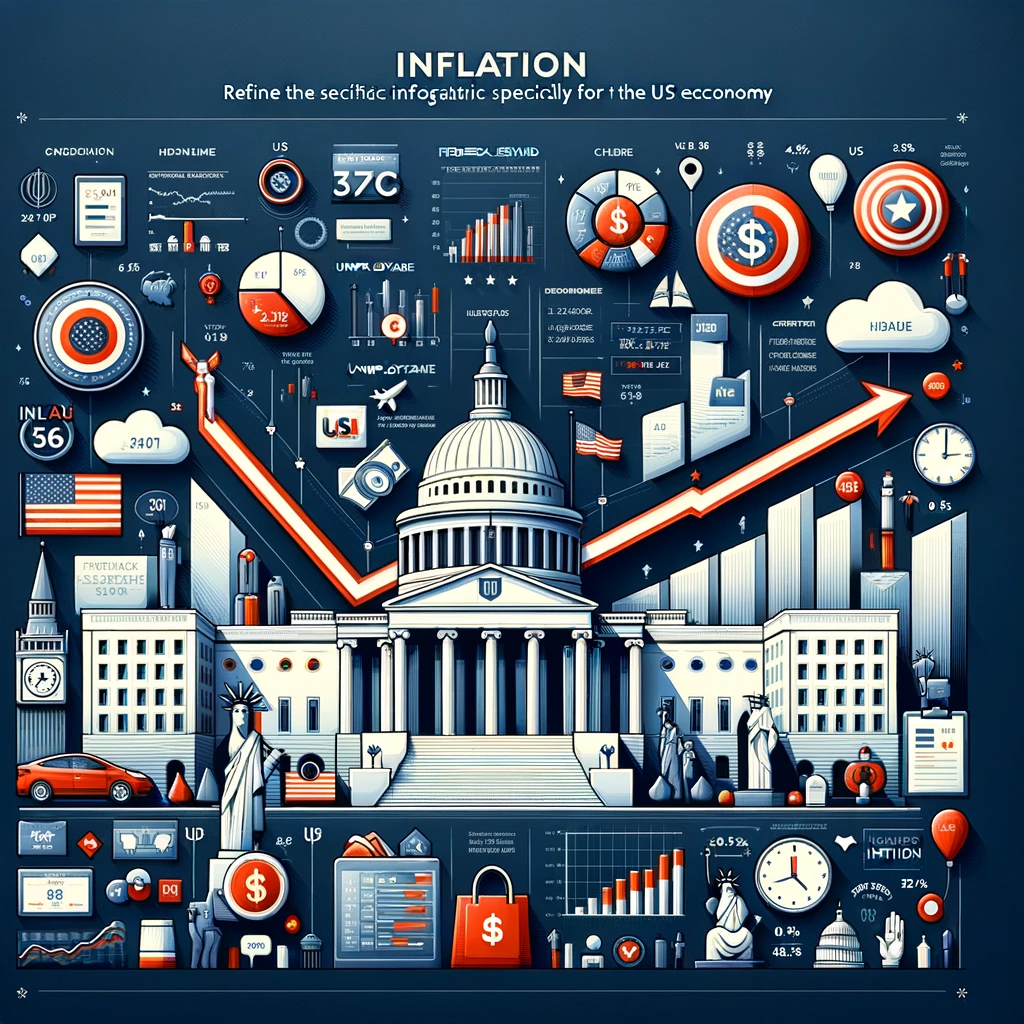Inflation Fluctuations and Expectations in the US: A Data Analysis Perspective
2023-10-02

Fluctuations in U.S. Urban Consumer Price Index (CPI) from Sep 2022 to Aug 2023 Suggest Volatility and Potential Moderation
The Consumer Price Index (CPI) for All Urban Consumers All Items in U.S. City Average has shown notable fluctuations in the year-over-year change from Sep 2022 to Aug 2023. After reaching a peak of 8.3% in Sep 2022, the CPI has gradually decreased to 3.6% by Aug 2023. This marks a significant deviation from the previous trend of consistently high inflation rates experienced since 2021. The CPI for Mar 2023 and Apr 2023 remained steady at 4.9%, indicating a potential plateau in the rate of decrease. However, May 2023 saw a further drop to 4.1%, followed by a sharper decline to 2.9% in Jun 2023, and a subsequent increase to 3.6% in Aug 2023. These fluctuations suggest a degree of volatility in the inflation rate, which may have implications for consumer purchasing power and cost of living. The longer-term context reveals a substantial contrast in CPI behavior, with average year-over-year changes ranging from 1.2% in 2020 to the peak of 8.0% in 2022, before moderating to 4.5% in 2023. This data underscores the recent period of elevated inflation relative to previous years, albeit with signs of some moderation in the most recent months.
Sharp Decline in Sticky Price CPI Signals Potential Deflationary Environment
The Sticky Price Consumer Price Index (CPI) measures changes in prices of goods and services that seldom change prices, providing insight into future inflation expectations. The latest data from the Federal Reserve Bank of Atlanta shows a notable trend in year-over-year changes: starting at 140.2% in September 2022, the index gradually decreased to -12.9% by August 2023. This marks a substantial deviation from previous years, where the average year-over-year changes were comparatively lower, with the index even dipping into negative territory in 2020. The sharp decline in the index from September 2022 to August 2023 signifies a significant decrease in inflation expectations, possibly due to various factors such as improved supply chain dynamics, decreased consumer demand, or base effect caused by previous high inflation levels. The current index value of -12.9% in August 2023 indicates a potential deflationary environment, which may lead to lower consumer spending and economic activities in the short term. It will be crucial to monitor if this trend in the Sticky Price CPI persists and its potential impact on broader inflation measures, monetary policy, and overall economic growth.
Fluctuating Trend in U.S. Consumer Inflation Expectations Revealed by University of Michigan Survey Data
The University of Michigan's Surveys of Consumers provide valuable insight into inflation expectations, as reflected in the median expected price change over the next 12 months. The latest data reveals a fluctuating trend in inflation expectations. After reaching a peak of 5.0% in October 2022, the median expected price change saw a gradual decrease to 3.2% in September 2023. Notably, there was a marked decline from January 2023 (3.9%) to March 2023 (3.6%), followed by a spike to 4.6% in April 2023, indicating significant volatility within a short period. This volatility suggests uncertainty among consumers regarding future inflation. The overall downward trend since October 2022 could be an indication of consumer sentiment aligning with reports of moderating inflationary pressures in the U.S. economy. However, the uptick in April may warrant attention, as it could signify renewed concerns about inflation. The sustained level below the peak suggests that while consumers may be more optimistic about inflation, there remains an underlying cautiousness. This data underscores the importance of closely monitoring consumer sentiment as a precursor to potential shifts in inflationary expectations and its impact on economic decision-making.
February 2024 Breakeven Inflation Rate Data Shows Stable Outlook
The latest monthly data on the Breakeven Inflation Rate as of February 2024, reveals the following figures: - 5-Year: 2.35% - 10-Year: 2.3% - 30-Year: 2.34% These values represent the market's expectations for annual inflation over the respective time horizons, derived from the difference in yields between Treasury Constant Maturity Securities and Treasury Inflation-Indexed Constant Maturity Securities. The breakeven inflation rates have implications for investors, policymakers, and financial markets, as they reflect market sentiment regarding future inflation trends. In this instance, the data indicates a relatively moderate expected inflation of around 2.3-2.35% across the various timeframes, suggesting a stable inflation outlook in the near term.
September 2023: Expected Inflation Rates by Time Horizon - Federal Reserve Bank of Cleveland
The latest monthly data from the Federal Reserve Bank of Cleveland for expected inflation, as of September 2023, reveals the following estimated rates: - 1-Year: 2.81% - 2-Year: 2.54% - 5-Year: 2.27% - 10-Year: 2.21% These figures are derived from a model that incorporates Treasury yields, inflation data, inflation swaps, and survey-based measures of inflation expectations. The trend indicates a gradual decline in expected inflation rates as the time horizon extends, with the 10-year expectation of 2.21% being the lowest among the provided time frames. This suggests a degree of confidence in moderate and stable inflation expectations over the medium to long term. It's important to closely monitor these figures in the context of broader economic indicators and policy developments to gauge their potential impact on financial markets and consumer behavior.
